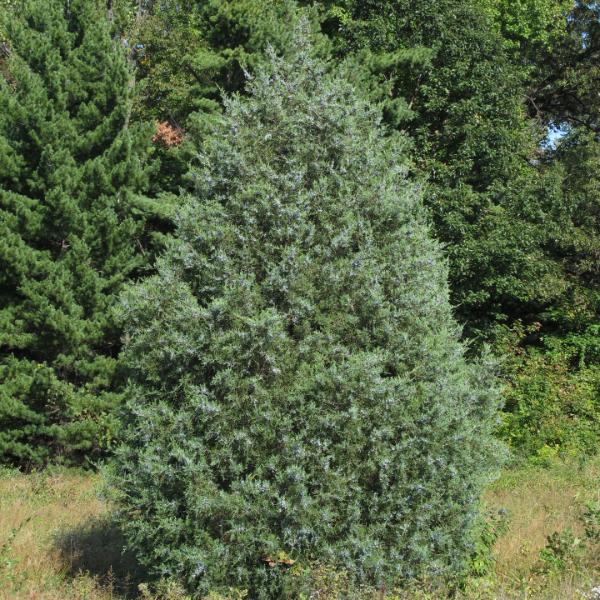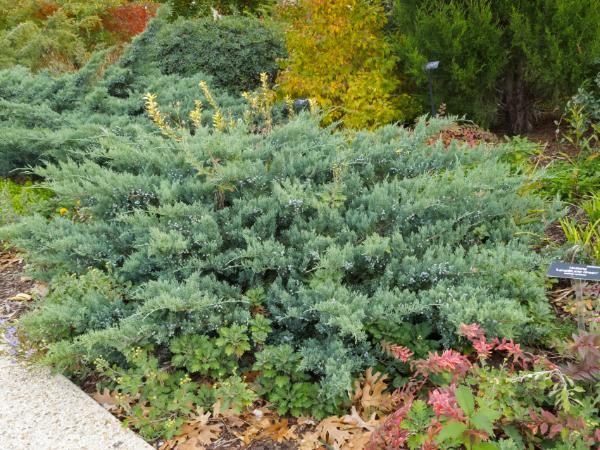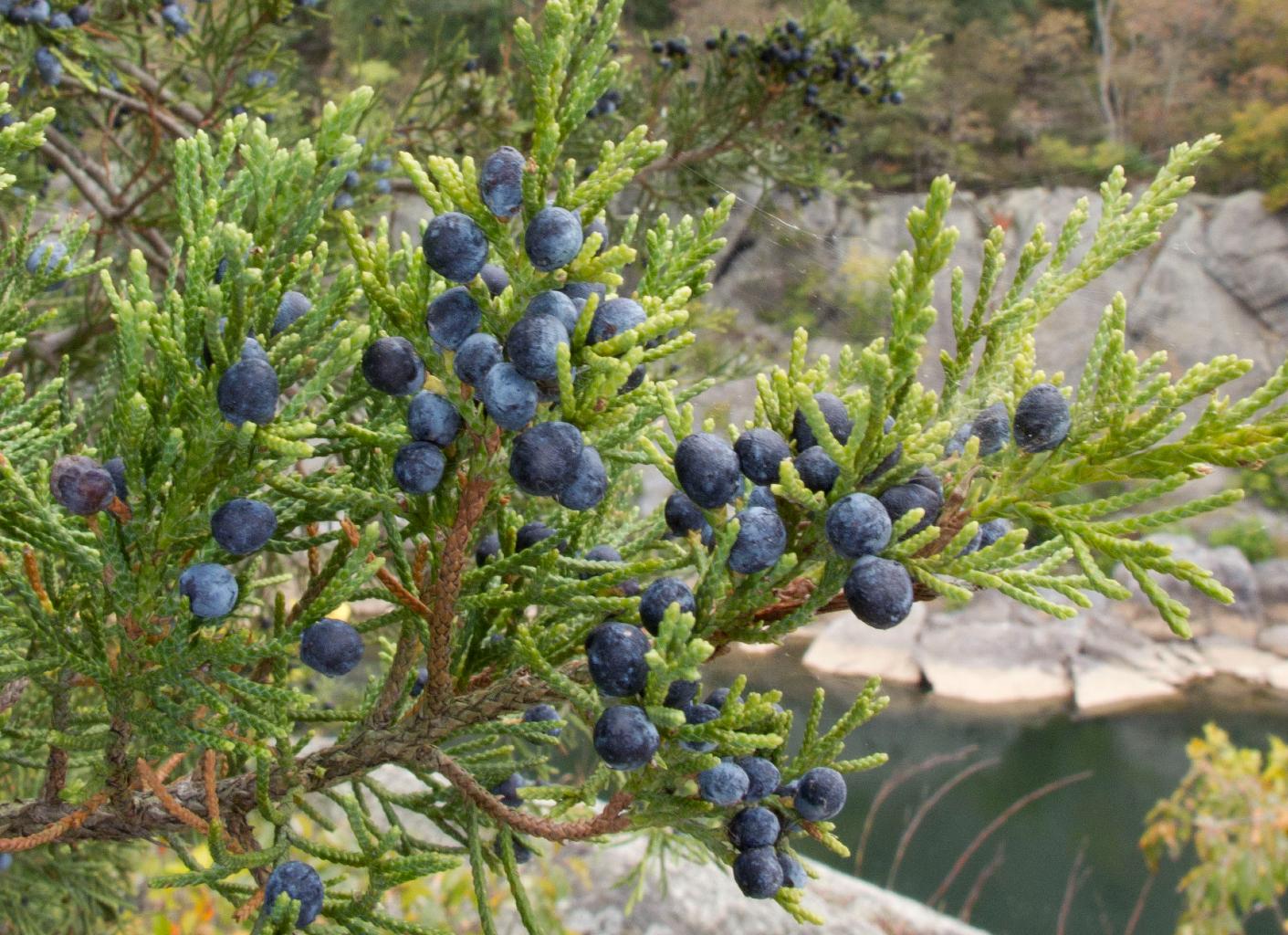About Eastern Redcedar
Juniperus virginiana
Evergreen tree
Maryland Distribution: Mountain, Piedmont, and Coastal regions
Height: 40’-70’; most cultivated varieties are much smaller
Flowers: inconspicuous yellow-green flowers in February-April; usually dioecious (male and female flowers are on separate plants); wind-pollinated
Fall color: evergreen; may develop a bronze color in winter
Sun: full sun
Soil: any soil type; dry to medium moisture; pH 5-8
Garden Uses: Eastern redcedar (Juniperus virginiana), or Eastern juniper, is native to the Eastern United States and all regions of Maryland. It is a pioneer species – a type of plant that is capable of being among the first to grow in barren clearings and disrupted habitats. It is a very adaptable tree, tolerant of poor, gravelly soils; drought; salt spray and brackish water. It tolerates some shade when young but grows best in full sun.

The berry-like cones on female Eastern redcedar trees are blue-gray and waxy or frosted in appearance. There are many cultivated varieties of this tree – some more compact, columnar, or pyramidal in form. Examples include:
- ‘Grey Owl’ - 3’-6’ tall with a horizontal spreading habit; silvery-gray foliage
- ‘Brodie’ - 20'-’25’ tall x 4’-6’ wide, columnar form, good for a screen or hedge
- ‘Emerald Sentinel’ - 15'-20' tall by 7'-8' wide
- ‘Blue Arrow’ - 12'-15' tall by 2' wide
- ‘Hillspire’ - 6'-8' tall by 8' wide
Use for: windbreaks, screening, hedges, shore plantings, and wildlife gardens.

Wildlife: Eastern redcedars are highly valuable for native wildlife. The nutritious berry-like cones of the female trees are eaten by many songbirds including Robins, Catbirds, Eastern Bluebirds, Blue Jays, and Mockingbirds. Cedar Waxwings (Bombycilla cedrorum) were named after the redcedar because of their preference for the cones. The dense branches of this tree also provide valuable shelter and nesting places for birds. Eastern redcedar is a host plant for the native Imperial Moth.
This is an alternate host plant for cedar apple rust and cedar quince rust, and it is susceptible to bagworm moths. It is deer-resistant.
References
Anderson, Michelle D. 2003. Juniperus virginiana. In: Fire Effects Information System, U.S. Department of Agriculture, Forest Service, Rocky Mountain Research Station, Fire Sciences Laboratory (Producer). https://www.fs.usda.gov/database/feis/plants/tree/junvir/all.html
Dirr, Michael. 1998. Manual of Woody Landscape Plants: Their Identification, Ornamental Characteristics, Culture, Propagation and Uses, Fifth Edition.
Eastern Red Cedar, Faunal Associations, Illinois Wildflowers
https://www.illinoiswildflowers.info/trees/plants/red_cedar.htm
Eastern Red Cedar, Maryland Biodiversity Project
https://www.marylandbiodiversity.com/view/319
Slattery, Britt E., et. al. 2005. Native Plants for Wildlife Habitat and Conservation Landscaping, U.S. Fish & Wildlife, Chesapeake Bay Field Office, Annapolis, MD. 82 pp.
